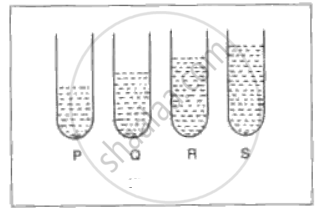Advertisements
Advertisements
प्रश्न
उत्तर
Sounds can be roughly divided into two categories: (i) music, and (ii) noise.
Regularity, contrivity and rapidity make musical sounds different from a noise. The distinction between music and noise is not very sharp; it is subjective.
| Music | Noise |
| 1. It is pleasant, smooth and agreeable to the ear. | 1. It is harsh, discordant and displeasing to the ear. |
| 2. It is produced by the vibrations which are periodic. | 2. It is produced by an irregular succession of disturbances. |
| 3. All the component waves are similar without any sudden change in their wavelength and amplitude | 3. The component wave chanqes their character suddenly and they are of short duration.. |
| 4. The sound level is low (below 30 dB). | 4. The sound level is hiah (above 120 dB). |
APPEARS IN
संबंधित प्रश्न
Name the phenomenon involved in tunning a radio set to a particular station
Define the Resonance phenomenon?
In the diagram below, A, B, C, D are four pendulums suspended from the same elastic string PQ. The length of A and C are equal to each other while the length of pendulum B is smaller than that of D. Pendulum A is set into a mode of vibrations

1) Name the type of vibrations taking place in pendulums B and D?
2) What is the state of pendulum C?
3) State the reason for the type of vibrations in pendulum B and C.
How does the medium affect the amplitude of free/natural vibrations of a body?
In following figure shows A, B , C and D represent test tube each of height 20 cm which are filled with water up to heights of 12 cm, 14 cm, 16cm and 18cm respectively. If a vibrating tuning fork is placed over the mouth if test tube D, a loud sound is heard.

- Describe the observations with the tubes A, B and C when the vibrating tuning fork is placed over the mouth of these tubes.
- Give the reason for your observation in each case.
- State the principle illustrated by the above experiment.
When a body vibrates under a periodic force, the vibrations of the body are ______.
In fig. , P, Q, R and S represent test tubes each of height 20 cm which are filled with water upto heights of 10 cm, 14 cm, 16 cm and 18 cm respectively. If a vibrating tuning fork is placed over the mouth of test tube Q, a loud sound is heard.
(i) Describe the observations with the tubes P, R and S.
(ii) Give the reason for your observation in each case.
(iii) State the principle illustrated by the above experiment.

On keeping the stem of a vibrating tuning fork on the surface of a table, a loud sound is heard. Give reason.
A bucket kept under a running tap is getting filled with water. A person sitting at a distance is able to get an idea when the bucket is about to be filled.
(i) What change takes place in the sound to give this idea?
(ii) What causes the change in the sound?
The rearview mirror of a motorbike starts vibrating violently at some particular speed of the motorbike, what could be done to stop the violent vibrations.
